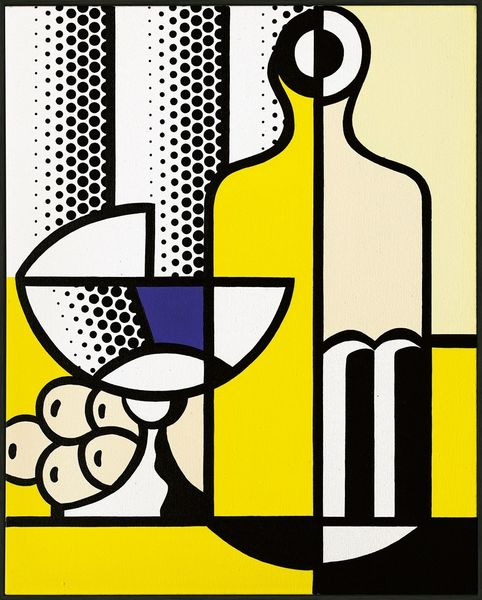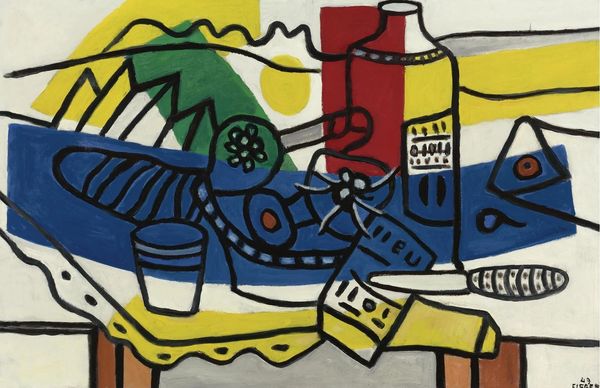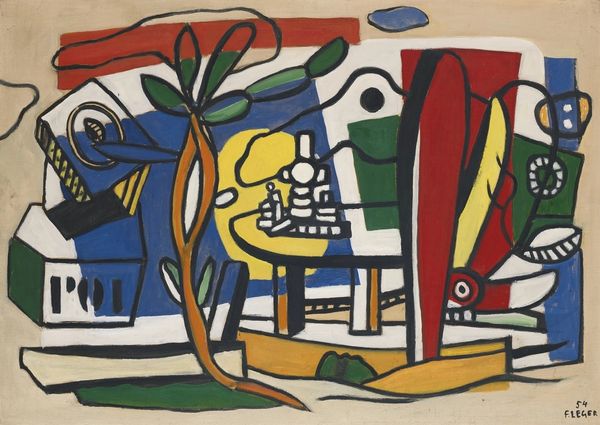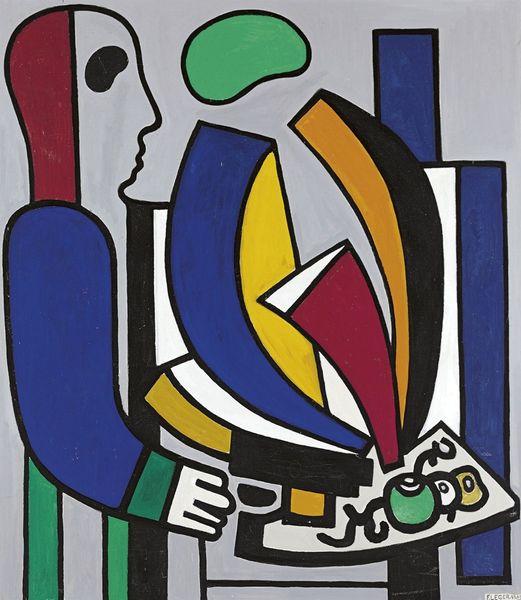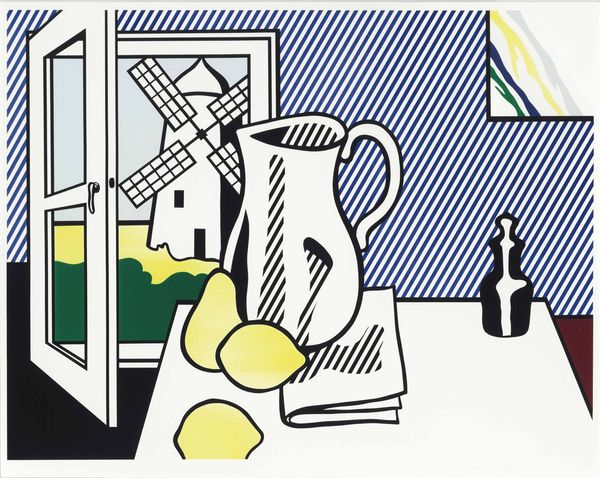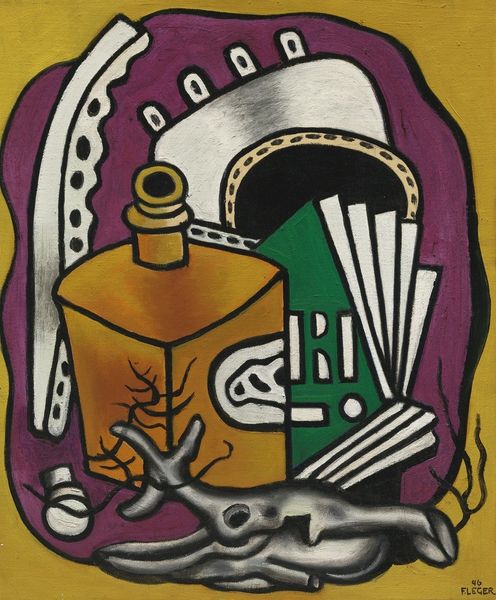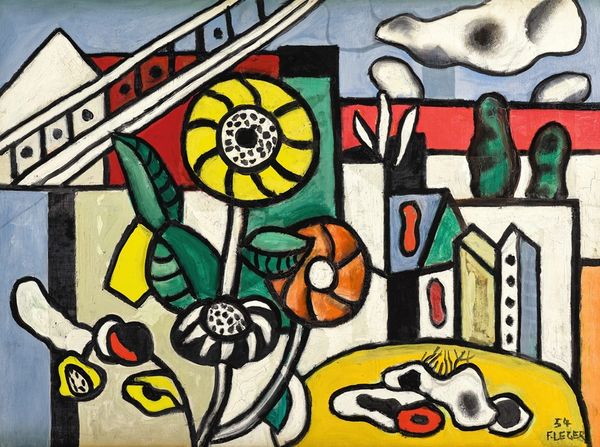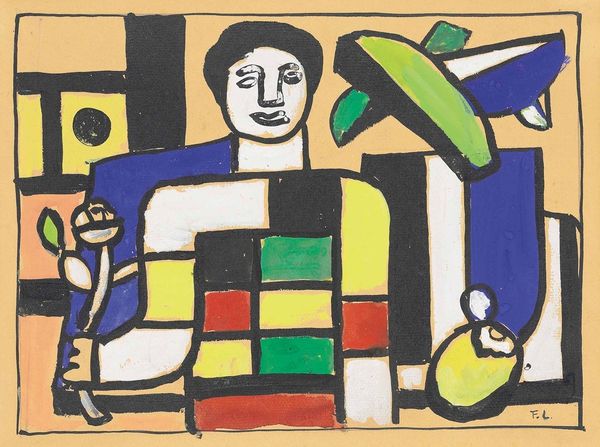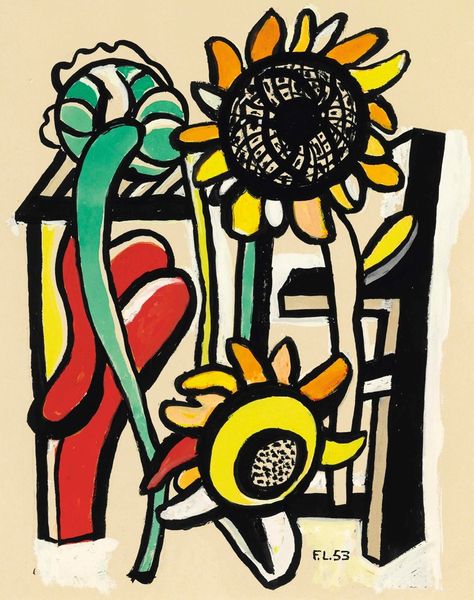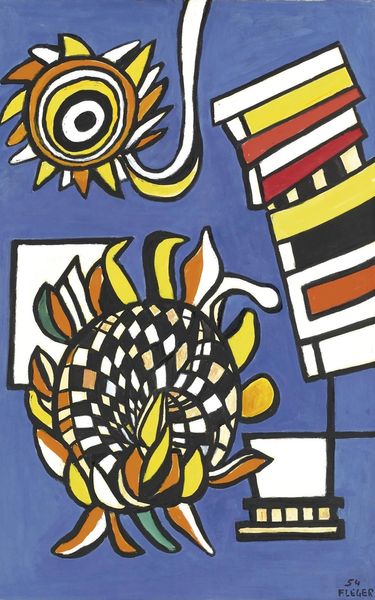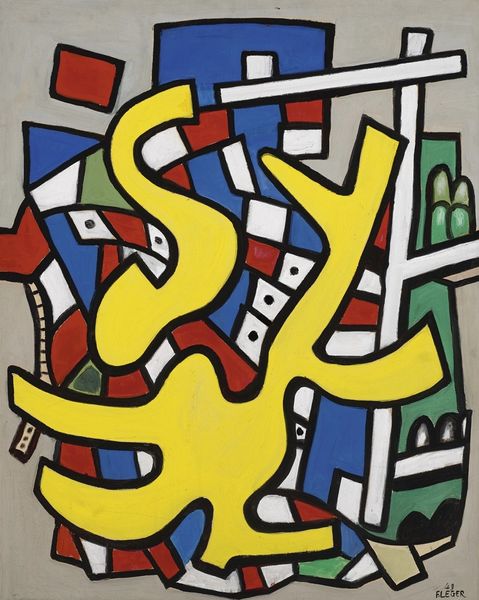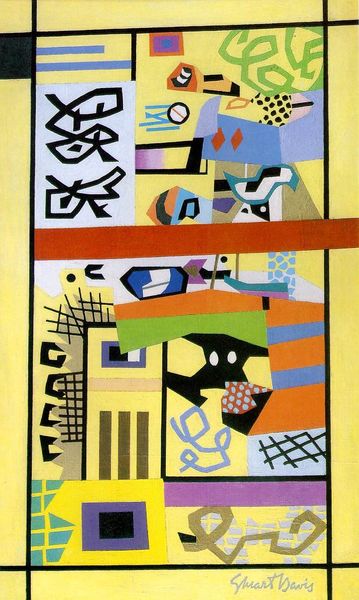
painting, oil-paint
#
cubism
#
painting
#
oil-paint
#
pop art
#
constructivism
#
geometric
#
abstraction
#
modernism
Copyright: Modern Artists: Artvee
Curator: The flattened planes and bold outlines create a very direct visual experience, almost aggressively so. Editor: It’s intriguing how Fernand Léger renders ordinary objects with such precision in “La bouteille noire,” painted in 1951 using oil on canvas. We see a black bottle, a red container, even a vegetable peeler of sorts rendered with geometric certainty. Curator: It is this interplay between utilitarian items and how Léger elevates the process by bestowing dignity through careful brushstrokes. Note how he takes mundane tools and transforms them through art. I wonder how he considered their social role at the time. Were these elements used for mass production? Does it critique the onset of new consumption practices? Editor: It certainly speaks to the post-war optimism about domestic life, even a nod to industrial production which shaped new forms of urban existence in France. The still life as a format has historically affirmed stability. Yet Léger subverts this notion, right? Curator: Right! By applying avant-garde strategies of abstraction and rejecting the pictorial, he disrupts the very history that has legitimated this format. What can you tell me about its reception? Was the museum circuit keen to adopt Léger’s industrial still lives? Editor: Well, after the war, modernism and abstraction were increasingly embraced. Léger’s art offered a visually appealing but nonetheless revolutionary break from pre-war academic painting. It’s the accessible avant-garde. What do you make of Léger including the date when signing the painting? It gives it a sort of documentary quality, like marking the time of production itself. Curator: True! I suppose marking “51” situates the objects themselves historically and his own artistic processes with new practices around material culture. His work really insists on the handmade object but is always caught in relation to machines. Editor: Indeed. A compelling insight into a transitional period through objects we might otherwise overlook. Curator: An exploration that offers a modern-day glance into how production shaped visual culture in postwar France.
Comments
No comments
Be the first to comment and join the conversation on the ultimate creative platform.
